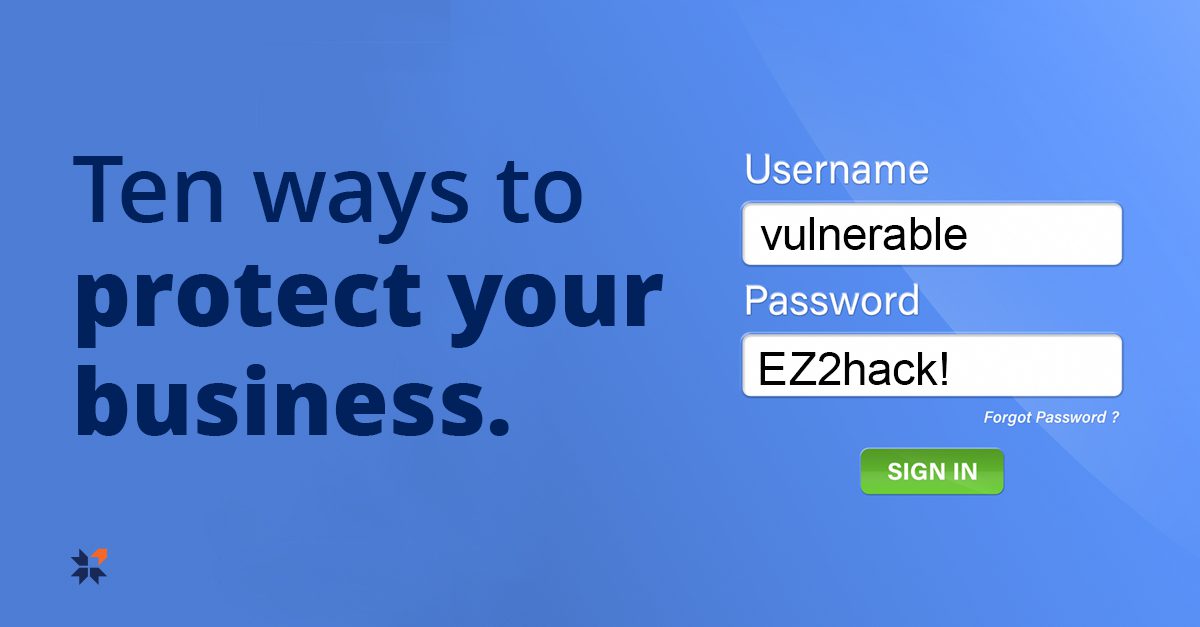
Cybersecurity threats and trends can change year over year as technology continues to advance at alarming speeds. As such, it’s critical for organizations to reassess their data protection practices at the start of each new year and make achievable cybersecurity resolutions to help protect themselves from costly breaches. The following are resolutions your company can implement to ensure you don’t become the victim of a cybercrime:
1. Provide Security Training
Employees are your first line of defense when it comes to cyber threats. Even the most robust and expensive data protection solutions can be compromised should an employee click a malicious link or download fraudulent software. As such, it’s critical for organizations to thoroughly train personnel on common cyber threats and how to respond.
Employees should understand the dangers of visiting harmful websites, leaving their devices unattended, and oversharing personal information on social media. Your employees should also know your cybersecurity policies and know how to report suspicious activity.
2. Install Strong Antivirus Software and Keep It Updated
Outside of training your employees on the dangers of poor cybersecurity practices, strong antivirus software is one of the best ways to protect your data. Organizations should conduct thorough research to choose software that’s best for their needs. Once installed, antivirus programs should be kept up to date.
3. Instill Safe Web-browsing Practices
Deceptive and malicious websites can easily infect your network, often leading to more serious cyberattacks. To protect your organization, employees should be trained on proper web usage and instructed to interact only with secured websites.
For further protection, companies should consider blocking known threats and potentially malicious web pages outright.
4. Create Strong Password Policies
Ongoing password management can help prevent unauthorized attackers from compromising your organization’s password-protected information. Effective password management protects the integrity, availability, and confidentiality of an organization’s passwords.
Above all, you’ll want to create a password policy that specifies all of the organization’s requirements related to password management. This policy should require employees to change their password on a regular basis, avoid using the same password for multiple accounts, and use special characters in their password.
5. Use Multifactor Authentication
While complex passwords can help deter cybercriminals, they can still be cracked. To further prevent cybercriminals from gaining access to employee accounts, multifactor authentication is key. Multifactor authentication adds a layer of security that allows companies to protect against compromised credentials.
Through this method, users must confirm their identity by providing extra information (e.g., a phone number, unique security code) when attempting to access corporate applications, networks, and servers.
6. Get Vulnerability Assessments
The best way to evaluate your company’s data exposure is through a vulnerability assessment. Using a system of simulated attacks and stress tests, vulnerability assessments can help you uncover entry points into your system. Following these tests, security experts compile their findings and provide recommendations for improving network and data safety.
7. Patch Systems Regularly and Keep Them Updated
A common way cybercriminals gain entry into your system is by exploiting software vulnerabilities. To prevent this, it’s critical that you update applications, operating systems, security software, and firmware on a regular basis.
8. Back Up Your Data
In the event that your system is compromised, it’s important to keep backup files. Failing to do so can result in the loss of critical business or proprietary data.
9. Understand Phishing Threats and How to Respond
In broad terms, phishing is a method cybercriminals use to gather personal information. In these scams, phishers send an email or direct users to fraudulent websites, asking victims to provide sensitive information. These emails and websites are designed to look legitimate and trick individuals into providing credit card numbers, account numbers, passwords, usernames, or other sensitive information.
Phishing is becoming more sophisticated by the day, and it’s more important than ever to understand the different types of attacks, how to identify them, and the preventive measures you can implement to keep your organization safe. As such, it’s critical to train employees on common phishing scams and other cybersecurity concerns, and to provide real-world examples during training to help them understand what to look for.
10. Create an Incident Response Plan
Most organizations have some form of data protection in place. While these protections are critical for minimizing the damages caused by a breach, they don’t provide clear action steps following an attack.
That’s where cyber-incident response plans can help. While cybersecurity programs help secure an organization’s digital assets, cyber-incident response plans provide clear steps for companies to follow when a cyber event occurs. Response plans allow organizations to notify impacted customers and partners quickly and efficiently, limiting financial and reputational damage.
For additional cyber risk-management guidance and insurance solutions, contact us today.
